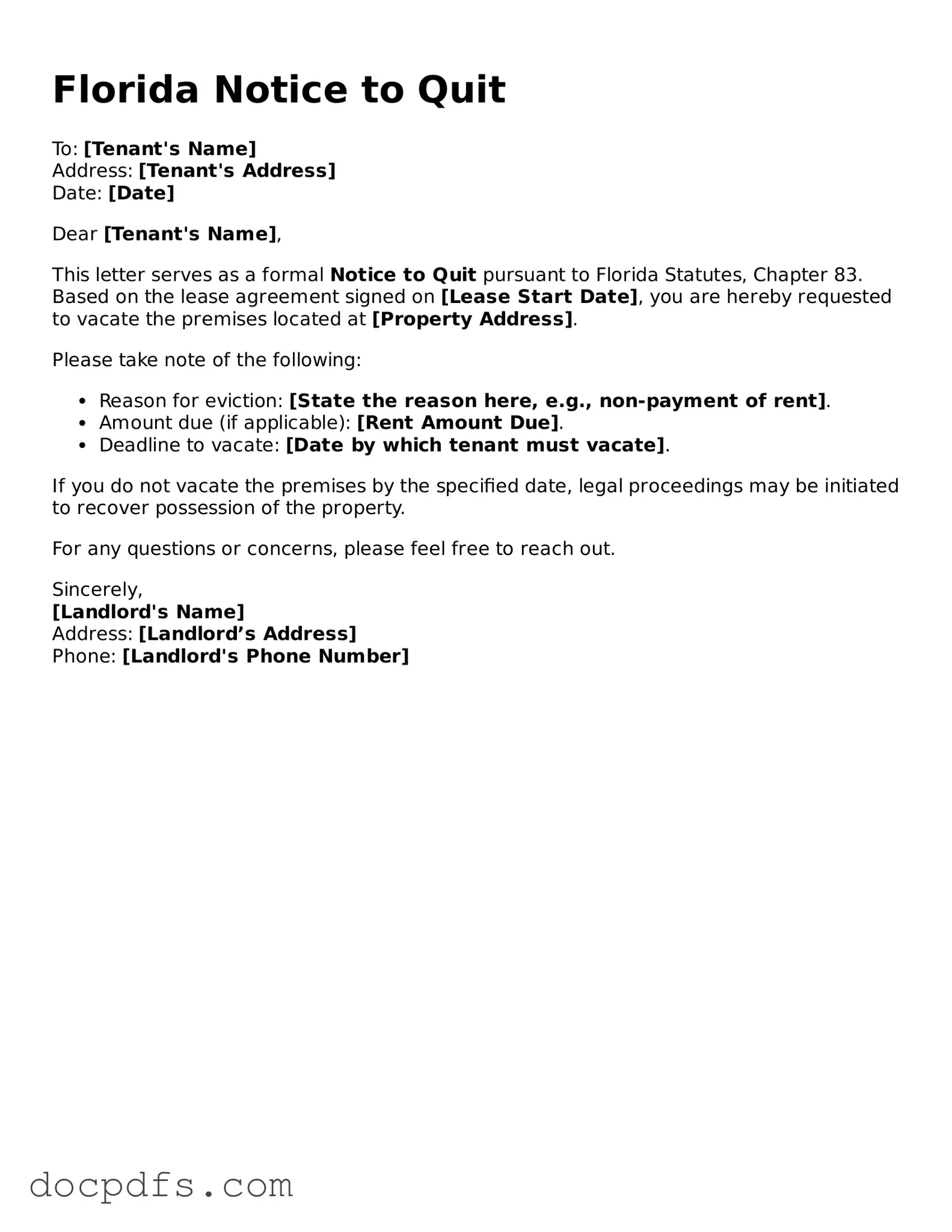The Florida Notice to Quit form is a legal document used by landlords to notify tenants that they must vacate the rental property. This notice typically arises when a tenant has violated the lease agreement or failed to pay rent. The form outlines the reasons for the eviction and provides a timeline for the tenant to leave the premises.
When should a landlord use a Notice to Quit?
A landlord should use a Notice to Quit when a tenant has breached the lease agreement. Common reasons include:
-
Failure to pay rent
-
Violating lease terms, such as unauthorized pets or subletting
-
Engaging in illegal activities on the property
It is essential to follow the proper legal process to ensure the eviction is valid.
How much notice must be given to the tenant?
The notice period varies depending on the reason for eviction. Generally, landlords must provide:
-
3 days for non-payment of rent
-
7 days for lease violations
-
30 days for month-to-month tenancies without cause
Always check local laws, as they may have specific requirements.
The Notice to Quit should include the following information:
-
The landlord's name and contact information
-
The tenant's name and the rental property address
-
The reason for the eviction
-
The date by which the tenant must vacate
Providing clear and concise information helps avoid confusion and potential disputes.
Can a tenant contest a Notice to Quit?
Yes, a tenant can contest a Notice to Quit. If they believe the notice is unjust or that they have rectified the issue, they can respond to the landlord. It may involve communication or legal action, depending on the situation. Seeking legal advice is often beneficial in these cases.
What happens if the tenant does not leave by the deadline?
If the tenant does not vacate the property by the specified deadline, the landlord may file for eviction in court. This legal process can take time and may require a hearing. It is crucial to follow all legal procedures to avoid complications.
Is it necessary to file a Notice to Quit before starting an eviction process?
Yes, in Florida, it is generally required to serve a Notice to Quit before initiating eviction proceedings. This step ensures that the tenant is formally informed of the eviction and has an opportunity to remedy the situation, if applicable.
Can a Notice to Quit be delivered in person?
A Notice to Quit can be delivered in several ways, including:
-
Hand delivery to the tenant
-
Posting on the rental property
-
Sending via certified mail
Using multiple methods can help ensure the tenant receives the notice.
Florida Notice to Quit forms are available online through various legal websites, or they can be obtained from local courthouse resources. It is important to use a form that complies with Florida laws to ensure validity.
